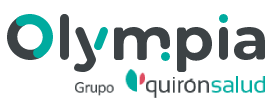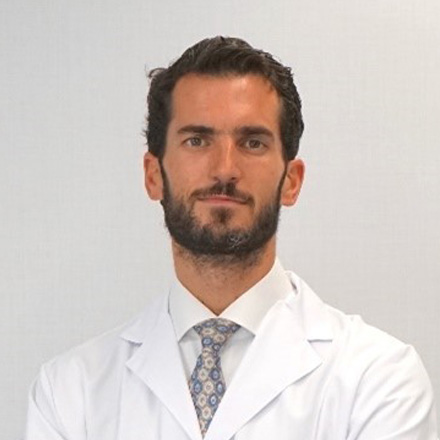Sport Center

Regenerative Medicine
In order to treat injuries with non-invasive procedures, we perform ultrasound-guided infiltrations in order to be totally accurate and more effective. We carry out treatments using all types of regenerative and biological techniques such as plasma rich in growth factors, among other methods.
The Ultrasound-guided Interventions and Biological Therapies Unit is a specialised service of Olympia, which offers advanced and cutting-edge solutions for the treatment of different conditions of the musculoskeletal system. Our highly trained team of professionals work with state-of-the-art technology to carry out interventions guided by ultrasound and other imaging techniques.
We offer a range of specialised procedures guided primarily by ultrasound, which allows the physician to perform these therapies much more efficiently and safely. This makes it an invaluable tool for surgical and diagnostic procedures.
We perform platelet-rich plasma (PRP) and cell therapy treatments, among other treatments. All our procedures are performed with the highest level of accuracy and safety, which results in optimal results for each patient.
Featured technology
- High-resolution ultrasound
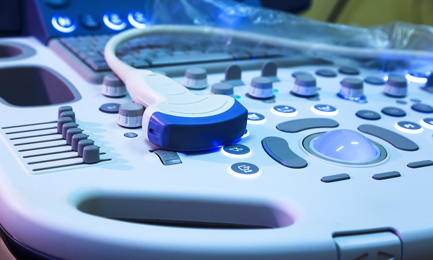
High-resolution ultrasound
We use high-resolution ultrasound to guide our interventions. This allows us to accurately visualise internal anatomical structures and ensure that we are delivering treatment to the correct area.
Featured treatments
We offer a wide range of biological therapies, platelet-rich plasma therapy, hyaluronate acid infiltrations, prolotherapy, monocyte infiltration...etc. These treatments can be used to treat muscle and bone injuries, arthritis, autoimmune diseases and many other conditions.
Some of the techniques we use:
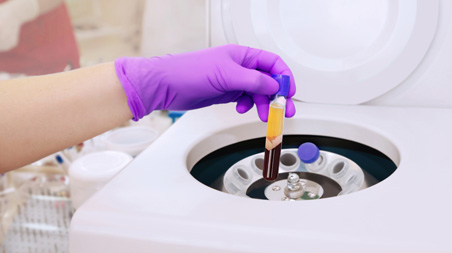
Platelet-rich plasma (PRP)
This technique involves the extraction of a small amount of blood from the patient, which is centrifuged to separate the platelets from the rest of the blood components. The platelets are then injected into the affected area of the body, stimulating the natural healing process. The large amount of growth factors contained in the platelet granules promotes healing and repair of wounds and other injuries.

Nerve blocks and hydrodissections
It is possible to perform purely sensory nerve blocks, in order to improve certain pains. By improving pain, this allows for earlier and more intense physiotherapy work, as well as shortening the time it takes to get back to doing sport. Nerve hydrodissection involves the use of fluid, saline or anaesthetic to free a nerve compressed by the surrounding tissue. In many cases, this compression occurs when the nerve crosses the fascial plane, causing deep pain. This procedure can be repeated until complete separation or tissue detachment is achieved.
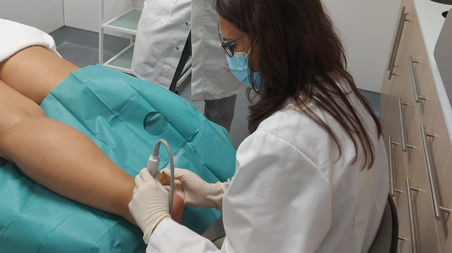
Minimally invasive ultrasound-guided therapies (percutaneous)
Percutaneous ultrasound-guided therapies are defined as the use of ultrasound for the control and guidance of certain complex procedures, with the aim of identifying the structures and areas to be treated, thus allowing intervention to be carried out with a minimal approach. In this way, advances in ultrasound techniques and equipment allow the use of ultrasound for guidance and improvement in certain procedures, where the ultrasound machine serves as a guide and support for the intervention. This additionally allows for smaller interventions, while maintaining visual control of the structures in depth. The most commonly used percutaneous ultrasound-guided procedures today are the following:
- Placement of drains
- Free body guidance or extraction
- Lavage of intratendinous calcifications
- Sonosurgery in neoformed cavities
- Opening pulleys on trigger fingers
- Peritendinous debridement in tendinopathies
- Percutaneous tenotomy in epicondylitis
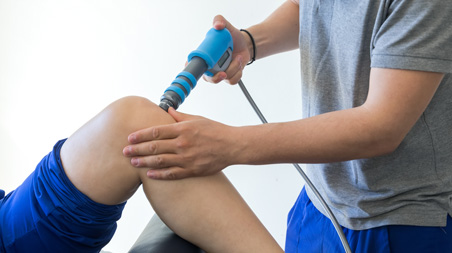
Shockwaves
The aim is to regenerate diseased or injured tissues through the mechanical and biological effects of very high energy acoustic waves. Shockwaves have been introduced in the world of sport because of their proven high angiogenic and regenerative potential.

